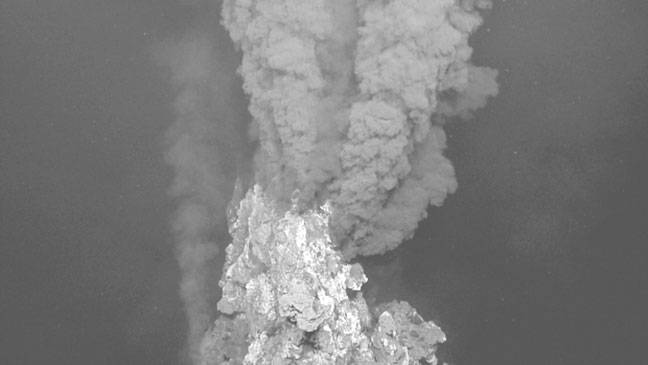PARIS - A ghostly deep-sea skate creates “nurseries” for its mobile phone-sized egg pouches in waters warmed by hydrothermal vents on the ocean floor, researchers said Thursday.
Eggs of the Pacific white skate (Bathyraja spinosissima) were found near heat-spewing vents at a depth of between 1,650 and 1,700 metres (5,400-5,600 feet), along the Galapagos Rift off the South American west coast, a team reported. “This is the first time this egg-incubating behaviour using the heat from active hydrothermal vents is recorded for the marine environment,” study co-author Pelayo Salinas de Leon of the Charles Darwin Research Station in Ecuador told AFP.
“We hypothesise that this species of deep-sea ray does this to speed up egg incubation time, since this could take over four years at an ambient temperature of just 2.7 degrees Celsius (36.9 degrees Fahrenheit). This was the ambient temperature measured on the sea floor, but around the vents, the water was warmer.
The team measured temperatures of less than a degree Celsius warmer in waters above the egg cases, but “these are conservative measurements considering that the temperatures reported here were collected at an average altitude of 3.5 metres above the seafloor,” they wrote in the journal Scientific Reports.
The deep sea remains the least explored ecosystem on Earth. Since they were first discovered in 1977, hydrothermal vents have been found to sustain unique creatures and biological processes. But they remain “extreme and logistically challenging environments” and difficult to study, the team said.
The Pacific white skate is one of the deepest-living of all known species, and has one of the longest egg incubation times reported for the animal kingdom.
Salinas de Leon and a team discovered the skate nursery on a 10-day research cruise in 2015, during which they despatched a small robot named Hercules to the ocean floor. “Like for most of the deep sea, unfortunately we have no information about what babies do when (they) hatch, where they spend their early days, etc,” he said by email, adding: “We need to explore further.”
Among land animals, a group of sauropod dinosaurs, long-necked, plant-eating creatures, used volcanically heated soils to incubate unusually large eggs, as does a modern-day flightless bird from Tonga called a megapode.






